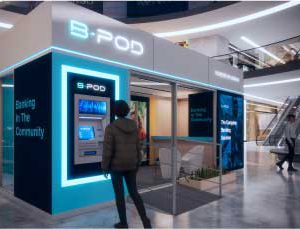Maximize first-time fix rates with optimized van kits

TestLink supports Brink’s ATM Services Engineers, providing ATM parts repair expertise around the globe. With over 30 years’ industry experience, TestLink’s repair and inventory services are specifically designed to improve ATM network performance, reduce operational costs and improve the customer experience.
A van kit is the set of equipment that a Service Engineer carries, used for performing first-line, second-line and preventative maintenance tasks. Van kits typically consist of parts, modules, materials, components and tools, and are usually created with standard contents for a group of ATM make and models.
Instead of using a standard kit, TestLink curates the contents and designs a kit that is specific to the ATM estate that the Brink’s engineer is supporting. The kit is optimized for the specific configurations and accounts for factors such as environment, transaction volumes and age of the machine. This tailored approach ensures that the Service Engineer always has the equipment needed to perform an efficient first-time fix.
Enabling more field fixes
In addition to the design of the overall van kit contents, TestLink has developed a number of ‘field fix kits’. These are a set of precise components compiled to resolve a particular common fault, enabling the Service Engineer to make a fast and effective repair in the field. They are designed with efficiency in mind, and using them to fix a fault is often faster than replacing the module, resulting in less ATM down time and better availability levels. In addition, avoiding multiple return visits also improves operational efficiencies and keeps costs down.
The evolution of TestLink field-fix kits is supported by an ethos of continuous improvement. Within the TestLink repair centers, data on part failure rates and fault frequencies is captured continuously; if a fault frequency is high, it is identified for a continuous improvement project (CIP). Engineering, Quality Control and Production teams will collaborate to determine the processes, techniques, components and equipment required to perform a fix in the field. Not all fixes are suitable for the field so the CIP includes establishing if it would be time-efficient, cost-efficient and beneficial for the customer. TestLink then conduct controlled sampling deployments to test live usage, gain feedback and revise the design, if necessary, before the new kit is launched.
Product research and development
TestLink’s Engineering team further enhance the effectiveness of van kits through product development. Designing customized components using data insights and failure mode analysis to identify which components are prone to fail, the team creates alternative materials that can extend the life of an ATM and reduce engineer call outs. Some examples of TestLink’s customized parts are highlighted below.
Low note sensor:
A low note sensor sits behind the ATM cassettes and detects when bills are running low and need replenishing. They were notoriously unreliable and generate many call outs. Due to the OEM design and layout of the wiring, the whole pick module would have to be replaced to rectify the fault. In an effort to reduce the time and disruption on site at the ATM, TestLink designed their own replacement low note sensor with a significant difference: it could be replaced in the field, saving time and reducing costs. Brink’s engineers are now equipped with the low note sensor field fix kit. However, they rarely need to use them because TestLink’s version of the low note sensor is so much more reliable than the OEM. These sensors are proven to last much longer in the field, taking the mean time between failure (MTBF) of a pick module from 232 days to a significantly increased 519 days.
Suction cup:
Many ATMs have a pivotal component that is essential to the currency dispensing process. An estimated 100,000 currency notes pass through what is known as a ‘suction cup’ every year. TestLink designed their own version of the blue suction cup, creating six different options and materials, before running ATMs continuously to stress test all the options. This rigorous analysis, involving over 700,000 picks per cup, ensured that the materials selected were operating within their prescribed stress and extension limits. Transactions were simulated over a number of transactions per second, to mimic 10 years’ worth of usage. Leveraging a deep understanding of material science, TestLink identified and incorporated specific additives to further augment the suction. Through meticulous research and development, TestLink engineered an enhanced suction cup, which was field-tested over a two-year period. In collaboration with a selection of customers, the TestLink suction cups were installed into thousands of live ATMs. Performance was monitored closely, and users reported a staggering reduction to one-third of the previous levels of usage, as well as increased reliability and 68% cost savings, testament to its superior performance.
Find out more about Brink’s ATM maintenance services







